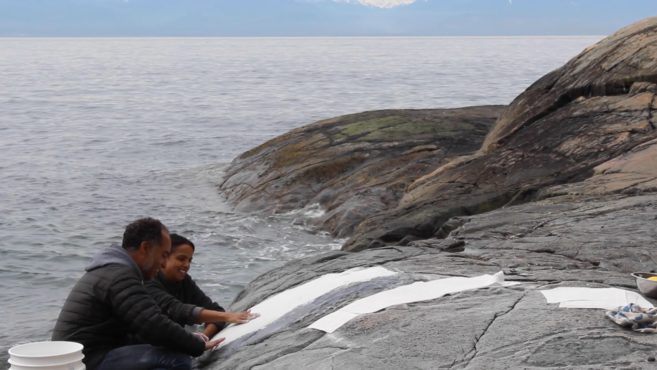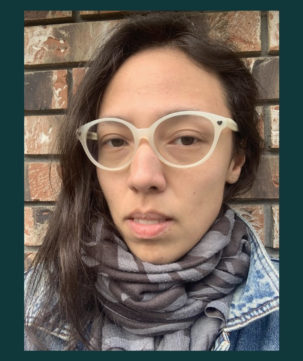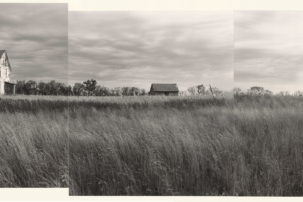Steffanie Ling tells me the screen is “a permeable membrane rather than a partition from each other,” and I take it to heart. Is this how a film festival can strive to be intimate, as well as political, radical, experimental?
I quickly feel a kinship with Ling and Sarah Tai-Black’s approach to curating a film festival that doesn’t fully feel like one. In the last few years, Images has expanded its programming to include more performances, conversations, a research forum and parties. Since 2015, under the artistic directorship of Amy Fung, the festival saw a notable shift to works that consider socio-political realities through—not separate from—form or medium.
As Black cradles Benson the dog (to help calm the energetic pup during our interview), she explains that the theme of the work she’s programmed this year—including live performances by Lido Pimienta and Aisha Sasha John—is heat, feelings and the body. Both Ling and Black are writers. Black has a background in DIY political zines and film criticism. She programs film series like Black Gold and constantly navigates what it means for experimental film—which could so easily be made accessible, but still isn’t—to hover between the formalities of art history and film, at the same time paying tribute to and undoing how working from the margins has been codified.
Ling came into film programming following from her work in community organizing and DIY artist-run culture. She approaches moving image as a transformative medium, socially and democratically speaking, because so many people interface with media: “Not everybody reads poetry or goes to art galleries, but everybody, whether they’re conscious of it or not, has formed a relationship to a screen.”
Together we discussed moving-image culture, the necessity of shifts in emotional tone and the other side of cynicism.
Joy Xiang: Both of you have a background in DIY culture. How has that informed your approach to Images?
Steffanie Ling: I think with zines or chapbooks or organizing underground music shows, protests, or rallies, you have to approach things with the attitude that something could go awry, and that’s integral to the experience. When we encounter criteria for things to be done a certain way—of course it’s helpful to keeping things ticking—but that doesn’t necessarily bring people closer together. It just means that we’re bodies or agents fulfilling a cultural agenda.
Sarah-Tai Black: We’re both from Vancouver, so I think we’re used to having no infrastructure. I feel like it’s been a natural procession to Images for us, though, because historically Images has purposefully not been “polished,” in terms of finding a space for radical art. Once you hit that point where everything has a glossy veneer, you might be overlooking the point of why we’re all here doing this work.
JX: Could you say more about grappling with the wider net of contemporary moving-image culture? What’s the nature of moving-image culture to you today?
SL: I think there’s a lot of joy that can be found in sitting in a black box, but expanded moving image is also a notion of expanded joy.
JX: That’s a way of looking at it that brings me pleasure.
STB: What’s the term you used in your [Images] catalogue letter? “Radical friendship”? It’s been interesting to navigate [that], especially [with] people who aren’t aware of Images. There are all these interconnected threads in artists’ practice, and it naturally makes sense. It’s not something that’s in any way not organic.
“…there’s a lot of joy that can be found in sitting in a black box, but expanded moving image is also a notion of expanded joy.”
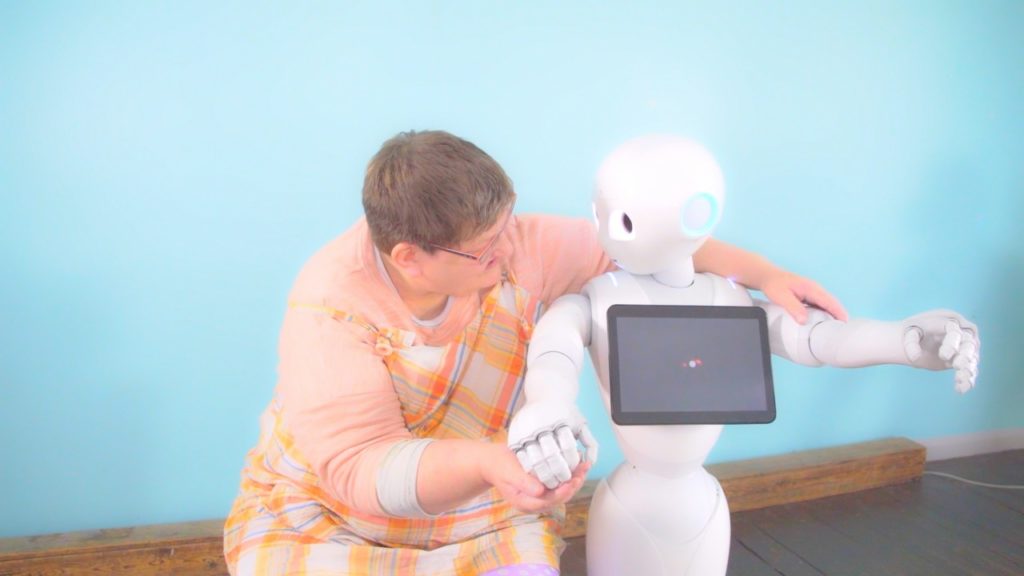 Rory Pilgrim, Software Garden (still), 2018. Eleven-track music-video album, 51 min. Courtesy andriesse eyck galerie.
Rory Pilgrim, Software Garden (still), 2018. Eleven-track music-video album, 51 min. Courtesy andriesse eyck galerie.
JX: The opening night feature is a music-video album by Rory Pilgrim, Software Garden. That reminds me of what you said about how we interact with different sorts of screens, not just film in a dark theatre. How do you think that work sets the stage for the rest of the festival? What are you hoping for people to be open to?
STB: We do have a lot of very serious films, but what’s nice about Software Garden opening our night and welcoming our new team to Images is that it’s optimistic, democratic and very analytically accessible. That shift in tone that we’re talking about makes you ask, What is the function of screen arts? There can be more than one. Not everything has to be as theoretically dense as a black hole to be generative or to bring joy or to hold any sort of radical potential.
SL: That program has a lot to do with combatting a kind of cynicism that we fall back into, connected to alienation, that we continually resubscribe to because of our manic-depressive relationship to technology. There are communities who find ways to access humanity with these instruments that are at the same time raking our data and turning those statistics into something that will ultimately oppress us in other systemic ways. I read this book recently called Weapons of Math Destruction, which describes different mechanisms that push [data] through algorithms. They then produce obscured or opaque ways that determine the value of a human being and their role in society. In many cases, people’s ways of trying to transcend their class or their wealth to access social services and support through the government is dampened because of the information collected through our engagement with social media. That’s the kind of cynicism I’m talking about.
The film—it’s not retreating—but it’s saying that if we go through the cynicism to the other side, [technology] is a tool we can utilize to our advantage. In particular with Rory’s film, many lyrics are adapted from the poetry of a disability-rights advocate based in the UK and her desire for [certain] technology to be implemented.
JX: Experimental film used to, and still does to some folks, hold the stereotype of being very formalist, abstract or medium-specific, which can seem outmoded, especially when it’s apoliticized. How do you think the words “experimental” and “alternative” are being reinvigorated?
STB: I see myself as a weird inheritor of that formalist framework and I’ve fought against a lot of that. So a lot of what I’ve programmed is what I’ve been calling “radical formalism,” “sad abstraction”…I think the way to invigorate anything is to put feeling into it—a livedness. I want formalism to be, like, 100% affect—100% embodied.
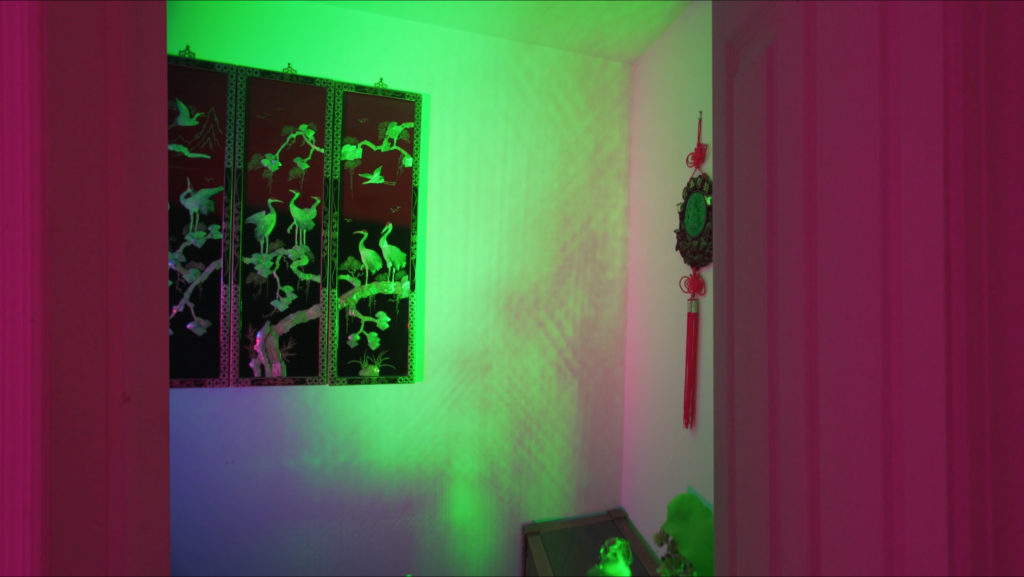
Lily Jue Sheng, Five Movements/五種流行之氣 (still), 2018. Digital video, 35 min. Programmed in ”Domestic Cinema,“ Images Festival 2019.

Onyeka Igwe, Specialised Technique (still), 2018. Digital video, 7 min. Courtesy the artist and BFI National Archive. Programmed in ”Notes on Being,“ Images Festival 2019.

Gabi Dao, The Protagonists (still), 2018. Digital video, 8 min. Programmed in ”Domestic Cinema,“ Images Festival 2019.
JX: Are there any examples from your programming you want to highlight?
SL: Each of our shorts programs has a pretty precise tone and question. It’s hard to highlight a specific short program.
STB: I’m going to do it. I say go see “Notes on Being.”
SL: [The shorts program] “Notes on Being” is a really nice cousin to “Feeling Resistance.” For Canadian Art I would pick “Domestic Cinema.” It has a lot of Canadians in it, but it’s not about that fact. The notion of domestic cinema comes from one of the films in the program, [Gabi Dao’s] The Protagonists—it’s a methodology she’s been developing to talk about how moving image and recorded sound can be created in proximity to a home that has trauma projected onto it because of diasporic narratives that are largely reinforced by what a white audience wants to see or understand about that experience. It’s quite frenetic—not the kind of feeling you ascribe to a film that is trying to grapple with displacement.
Speaking more generally to the program, a lot of the works we selected are coded specifically for the audience they’re talking to, not for a generalized audience. I think that an audience, whoever they are, must come to terms with the fact that if they don’t understand something, maybe they’re not meant to. and that’s OK.
JX: It’s OK to not understand something; it’s OK for something to not be for you.
STB: I think this year we really tried to move away from this kind of universalism of abstraction or formalism or what experimentalism is. Inherent in experimentalism is [the] subjective, purposeful and directive.
JX: Can you talk a bit about the choice to feature KC Wei as this year’s Canadian spotlight artist?
SL: KC did a special project for Images a number of years ago called Chinatown Mall Happenings, where she hosted different events such as mah-jong and karaoke. Part of that work informs her filmmaking, but she has not been celebrated as a filmmaker per se. I’ve written about her work and I always have a difficult time trying to make her comprehensible, which is the strength of her practice. She has community-based, service-driven works. She had this monthly art rock event at a very old, established, seedy, deep dive bar. She’s able to navigate all these different echelons in so many different ways. All of this stuff informs her filmmaking.
JX: It feels like there’s more integration this year between gallery/off-screen events and artist talks, and more DJed parties adjacent to your programming. I was especially excited to see the performances by Lido Pimienta and Aisha Sasha John. What are themes in the types of projects at Images this year that excite you?
STB: Aisha’s is Heat, the title and thematically. She is obsessed in a wonderful way with this idea of heat and embodiment, in bodies through space and bodies in space with other bodies. As for Lido, it’s a reiteration of her performance she did at Caminos, of her graphic novel.
At a certain point in the festival, around day three to four, [the programming] gets a bit heavy. So it’s really nice to have that emotional tone-switch after people have settled into that space, and then they see something completely different. They see Aisha doing an improvised-dance performance at a moving-image arts festival; they see Lido [with] a graphic novel onscreen, yelling at the crowd about men.
JX: It makes me think a lot about rhythm, like you were saying, even the pacing of the types of works and spaces to breathe, and changes in tone, are so important.
STB: Exactly. Aisha is very much working on that concept of rhythm and disrupting the conventional.
JX: Is there anything else you want Images-goers, and wider publics, to know about the festival this year?
SL: It’s six dollars if you’re unemployed, underemployed or a student.* We have a rate to keep things accessible and I think that is something to emphasize.
STB: I want to emphasize that we have a lot of things that are new to Toronto, a lot of artists who haven’t shown here historically: Christopher Harris, Cauleen Smith, KC Wei. Lots of good stuff, old and new, and it’s all new, even if it’s old.
*$10 for opening and closing nights.
Images Festival runs April 11–18 at various galleries, cinemas and venues in Toronto.

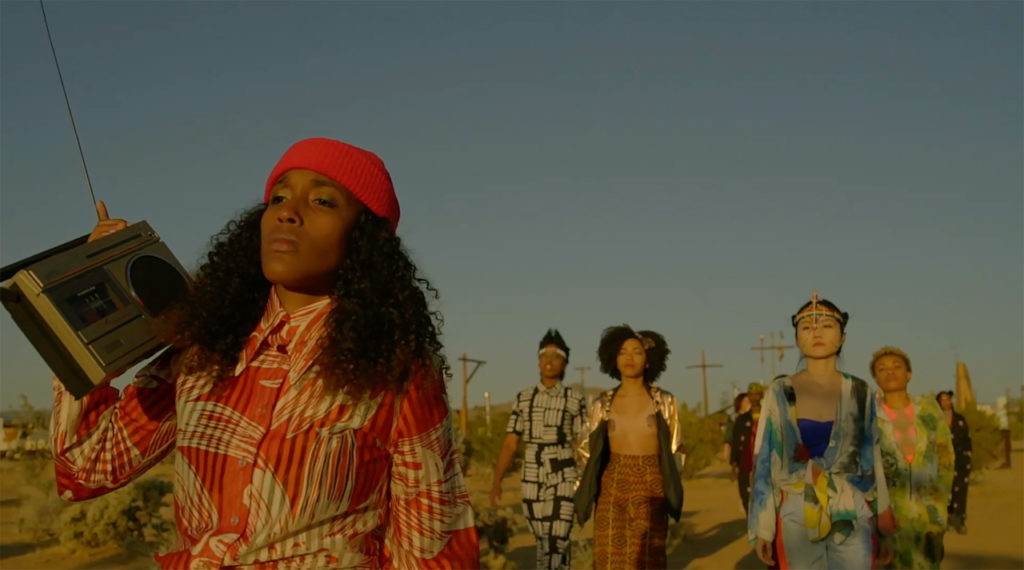 Cauleen Smith, Sojourner (still), 2018. Digital video, 22 min.
Cauleen Smith, Sojourner (still), 2018. Digital video, 22 min.
